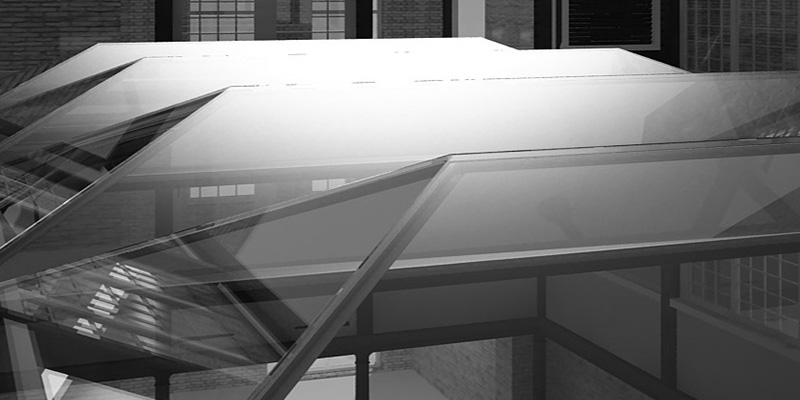Downloads
DOI:
https://doi.org/10.7480/jfde.2014.3-4.910Keywords:
Building envelopes, structural glass, parametric design, energy efficiencyAbstract
The focus of this paper is to promote close collaborations of facade and structural engineers through integration of design services in order to deliver more optimal glass envelopes. To achieve the best performance, this process involves a careful selection of glass and coatings, radiation analysis to maximise daylight while controlling solar gain, and preventing overheating of spaces as well as careful detailing. Site-specific environmental data are used to accurately determine the performance requirements of the glass. Once the environmental impact is assessed the temperature in the interlayer is calculated over any chosen time domain. As part of the proposed process, a technique for determining the time-dependent structural behaviour of SGP laminated glass under varying temperature loads is also considered. In conclusion the authors examine the possibility of integration of both environmental and structural design approaches through the use of parametric software.
How to Cite
Published
Issue
Section
License
Copyright (c) 2015 Lisa Rammig, Peter Lenk, Vladimir Marinov

This work is licensed under a Creative Commons Attribution 4.0 International License.
Authors or their institutions retain copyright to their publications without restrictions.
References
ANSYS Inc. & SAS IP inc. 2010, ANSYS 13.0 Theoretical Manual.
De Bleecker, H., Scholz, C., Mocibob, D., Standaert, P. (2014). A novel glass facade with high environmental targets. In: C. Louter, F. Bos, J. Belis & J.-P. Lebet (Eds.), Challenging Glass 4 & Cost Action TU0905 Final Conference (pp. 161-170). London, United Kingdom: Taylor & Francis Group.
EnergyPlus Energy Simulation Software, Weather Data, WMO Region 4 - Mountain View-Moffett Field NAS 745090 (TMY). Retrieved May 1, 2014 from http://apps1.eere.energy.gov/buildings/energyplus/weatherdata_about.cfm
Ferry, J.D. (1980). Viscoelastic Properties of Polymers, 3rd edition, John Wiley & Sons.
Fildhuth, T., Knippers, J., Bindji-Odzili, F., Baldassini, N., Pennetier, S. (2014). Recovery behaviour of laminated cold bent Glass. In: C. Louter, F. Bos, J. Belis & J.-P. Lebet (Eds.), Challenging Glass 4 & Cost Action TU0905 Final Conference (pp. 113-120). London, United Kingdom: Taylor & Francis Group.
Galuppi, L., Massimiani, S., Royer-Carfagni, G. (2014). Snap-through instability in double curved cold –bent glass. International Journal of Non-Linear Mechanics, Elsevier 2014, In Press.
Galuppi, L., Royer-Carfagni, G. (2014). The design of laminated glass under time-dependent bending and buckling. In: C. Louter, F. Bos, J. Belis & J.-P. Lebet (Eds.), Challenging Glass 4 & Cost Action TU0905 Final Conference (pp. 431-438). London, United Kingdom: Taylor & Francis Group.
Harding, J. (2012). Thinking Topologically at Early Stage Parametric Design, Advances in Architectural Geometry, 77-90.
Hindrichs, D., Daniels, K. (Eds.) (2007). Plusminus 20º/40º latitude. Edition Axel Menges. Stuttgart/London.
Imbert, F. (2012). Concurrent Geometric, Structural and Environmental Design: Louvre Abu Dhabi, Advances in Architectural Geometry, 67-76.
Rutten, D. (2010). Evolutionary Principles applied to Problem Solving. Retrieved May 17, 2014 from http://www.grasshopper3d.com/profiles/blogs/evolutionary-principles
Vanderbroek, M., Belis, J., Louter, Ch. (2013). Thermal breakage of glass. In: J. Belis, Ch. Louter, & D. Mocibob (Eds.), Cost Action TU0905 Mid-term Conference on Structural Glass (pp. 563-569). London, United Kingdom: Taylor & Francis Group.
